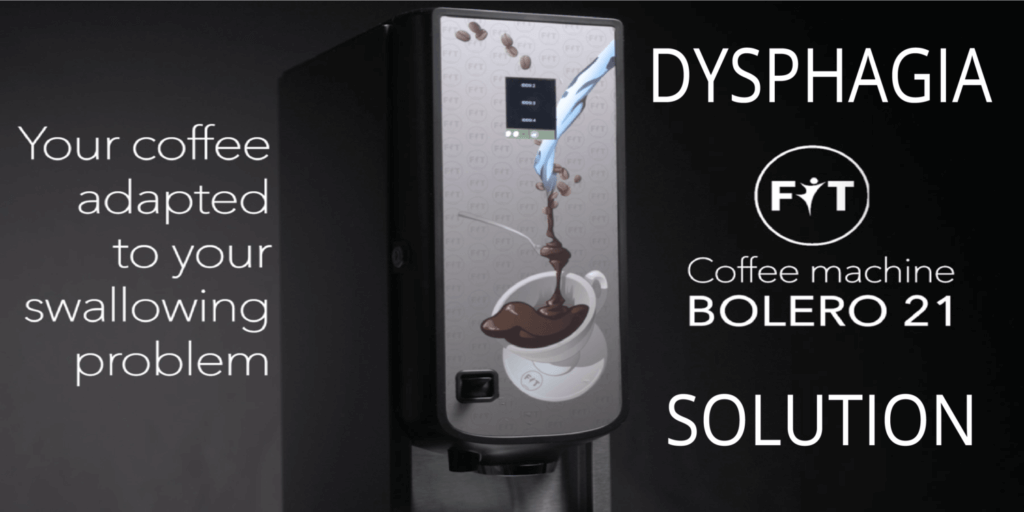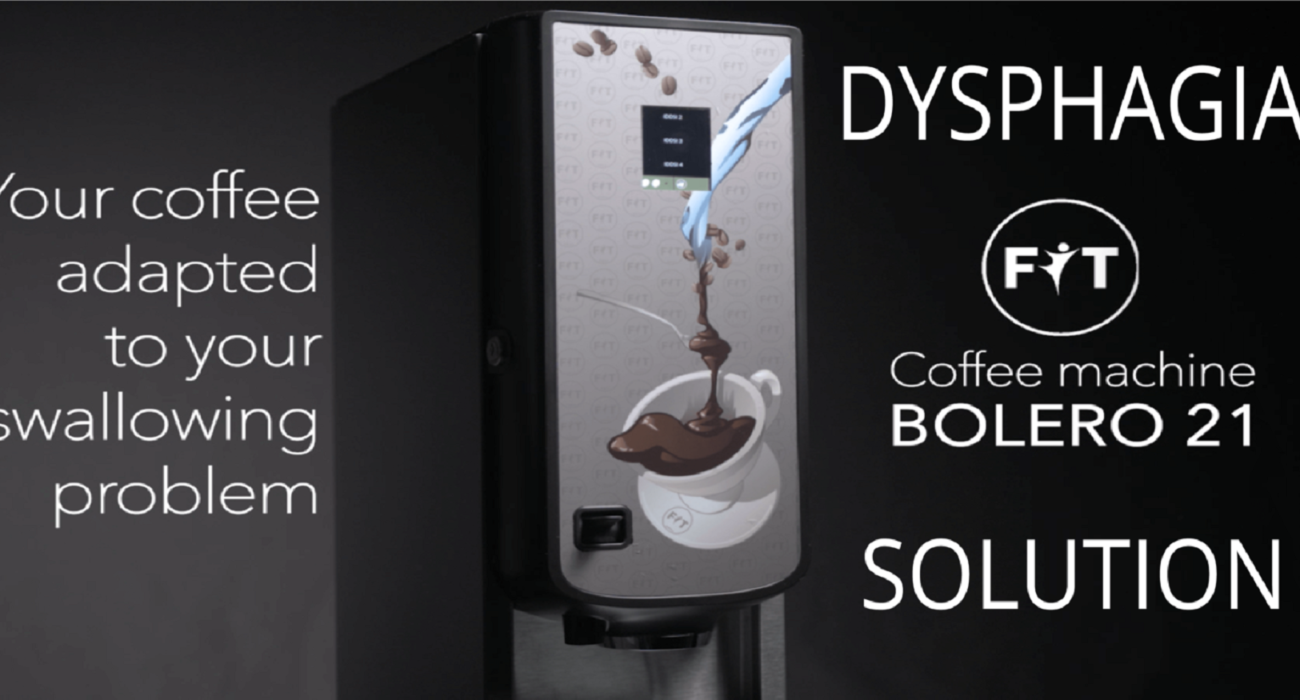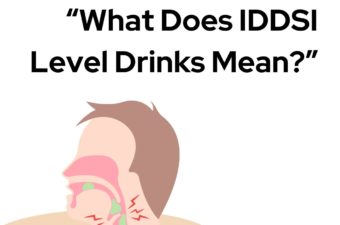Nourishing Solutions for Swallowing Difficulties
Swallowing difficulties, known as dysphagia, can significantly impact an individual’s ability to consume food safely and comfortably. In such cases, dysphagia foods come to the rescue. These specialized food textures and consistencies are designed to make eating safer and more enjoyable for individuals with swallowing challenges. In this blog post, we will delve into the world of dysphagia foods, exploring their purpose, benefits, potential challenges, and the vital role of the International Dysphagia Diet Standardization Initiative (IDDSI) in ensuring consistency and safety.
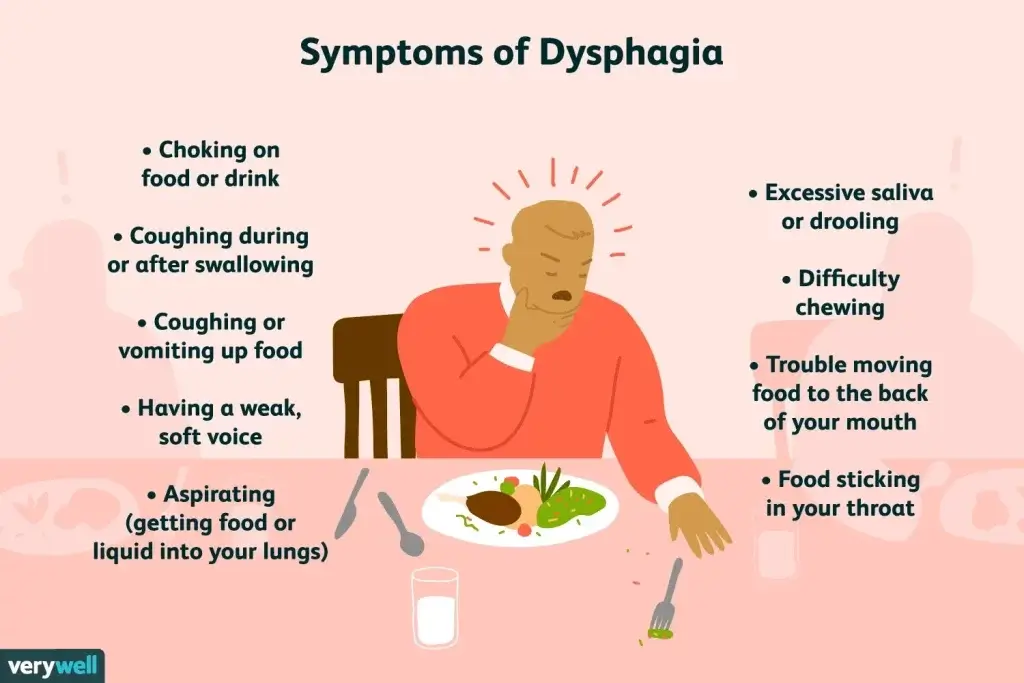
Understanding Dysphagia Foods:
Dysphagia foods are meticulously prepared to meet specific texture and consistency requirements, making them easier to swallow and reducing the risk of choking or aspiration. These foods are typically classified into different levels based on their texture and thickness, as defined by the IDDSI framework. Let’s take a closer look at the different levels of dysphagia foods:
Level 3: Liquidized Foods (Pureed):
At this level, foods are pureed to a smooth, cohesive texture. They resemble a thick paste or pudding consistency, making them easier to manage and swallow for individuals with moderate swallowing difficulties.
Level 4: Minced and Moist Foods:
Level 4 foods are finely minced or chopped into small, manageable pieces. The texture is moist and cohesive, making them easier to form into small boluses and swallow. These foods provide more sensory stimulation and require a moderate level of chewing ability.
Level 5: Soft and Bite-Sized Foods:
Foods at this level are soft and easily mashed with a fork. They can be easily formed into bite-sized pieces and offer more variety and texture. This level caters to individuals with mild swallowing difficulties who can tolerate a greater range of food textures.
Benefits of Dysphagia Foods:
- Safety: Dysphagia foods are carefully prepared to minimize the risk of choking and aspiration, ensuring a safer eating experience for individuals with swallowing difficulties.
- Nutrition: Dysphagia foods are designed to provide essential nutrients, ensuring that individuals with dysphagia receive a well-balanced diet that meets their nutritional needs.
- Independence: Dysphagia foods allow individuals to maintain a level of independence and dignity by enabling them to eat with greater ease and confidence, reducing the need for assistance during mealtime.
- Enjoyment: Despite swallowing challenges, dysphagia foods offer a range of flavors, textures, and visual appeal, allowing individuals to continue enjoying their meals and avoiding the monotony of a restricted diet.
Considerations and Challenges:
While dysphagia foods offer numerous benefits, it’s essential to be aware of potential challenges and address them effectively:
- Texture and Flavor Adaptation: Adjusting to the texture and flavor changes in dysphagia foods can be challenging initially. It requires patience and support from healthcare professionals, caregivers, and culinary experts to ensure a smooth transition.
- Emotional Impact: The inability to eat regular foods may lead to emotional and social implications, as food is deeply intertwined with culture, tradition, and social interactions. Providing emotional support and creating a positive dining environment is crucial for individuals with dysphagia.
The Role of IDDSI:
The IDDSI framework plays a pivotal role in standardizing dysphagia diets worldwide. It provides guidelines and descriptors for food and drink textures, ensuring consistency and safety in preparing dysphagia foods. The framework offers healthcare professionals, caregivers, and foodservice providers a common language to communicate and implement appropriate food and drink modifications for individuals with swallowing difficulties.
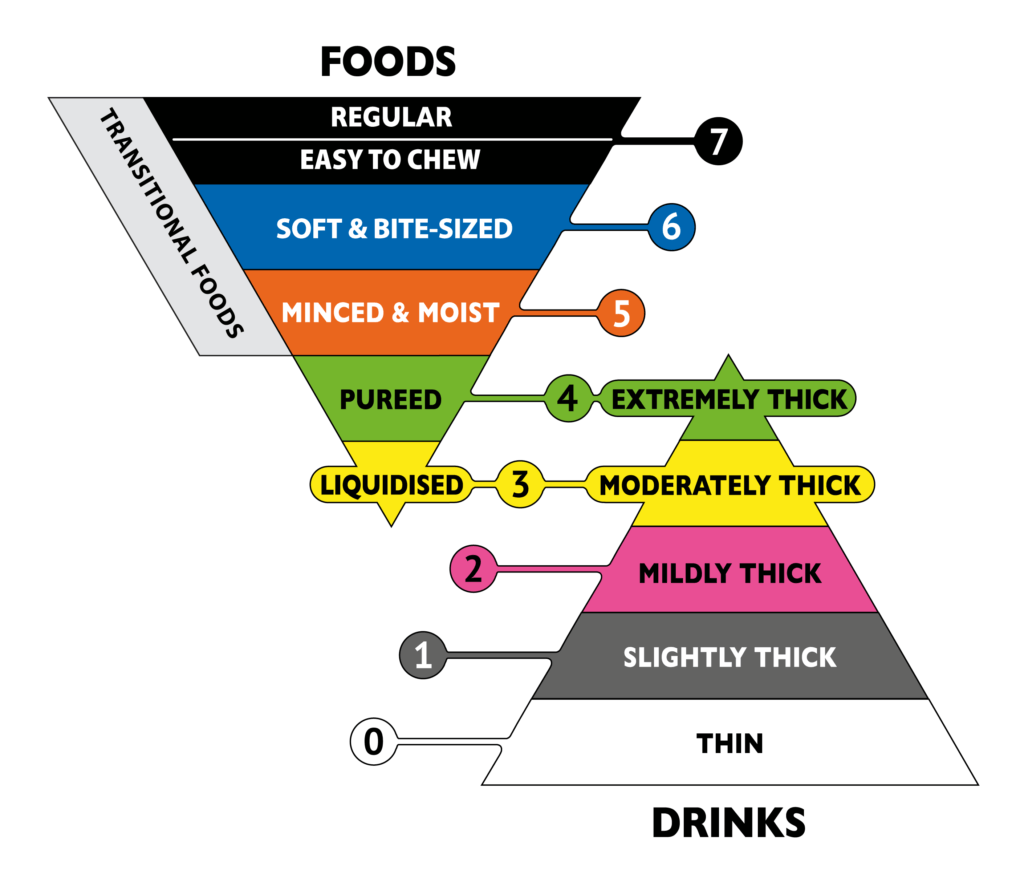
Dysphagia foods are essential tools in managing swallowing difficulties and ensuring safe and enjoyable eating experiences for individuals with dysphagia. These specialized food textures and consistencies, categorized according to the IDDSI framework, offer a range of options that cater to varying levels of swallowing challenges. By providing safety, nutrition, independence, and enjoyment, dysphagia foods empower individuals to maintain a fulfilling dining experience while minimizing the risk of complications.
While adapting to dysphagia foods may pose initial challenges, the support of healthcare professionals, caregivers, and culinary experts can ease the transition and enhance the overall well-being of individuals with dysphagia. It is crucial to acknowledge the emotional impact and provide a supportive environment that fosters acceptance and social engagement.
The IDDSI framework acts as a vital guideline, ensuring consistency and safety in the preparation and serving of dysphagia foods worldwide. Its standardized descriptors enable effective communication and implementation of appropriate modifications, benefiting both individuals with dysphagia and the professionals involved in their care.
In conclusion, dysphagia foods serve as nourishing solutions for individuals with swallowing difficulties, offering safety, nutrition, and the opportunity to enjoy a diverse range of textures and flavors. With ongoing research and advancements, dysphagia management continues to evolve, providing hope and improved quality of life for those facing these challenges. Through a comprehensive approach that includes proper assessment, individualized care plans, and the implementation of dysphagia foods, we can ensure that individuals with dysphagia receive the sustenance they need while embracing the joy of eating.
In the exciting realm of dysphagia management, 2023 has witnessed a groundbreaking invention: dysphagia drink and coffee machines equipped with cutting-edge technology that ensures the correct IDDSI level with every drink produced. These innovative machines have revolutionized the process, saving time, money, and eliminating wastage. By seamlessly preparing beverages at the designated IDDSI thickness level, they simplify the process for healthcare professionals, caregivers, and individuals with dysphagia. With this remarkable invention, individuals can now enjoy their favourite dysphagia-friendly drinks with confidence, knowing that every sip meets their specific swallowing needs.
